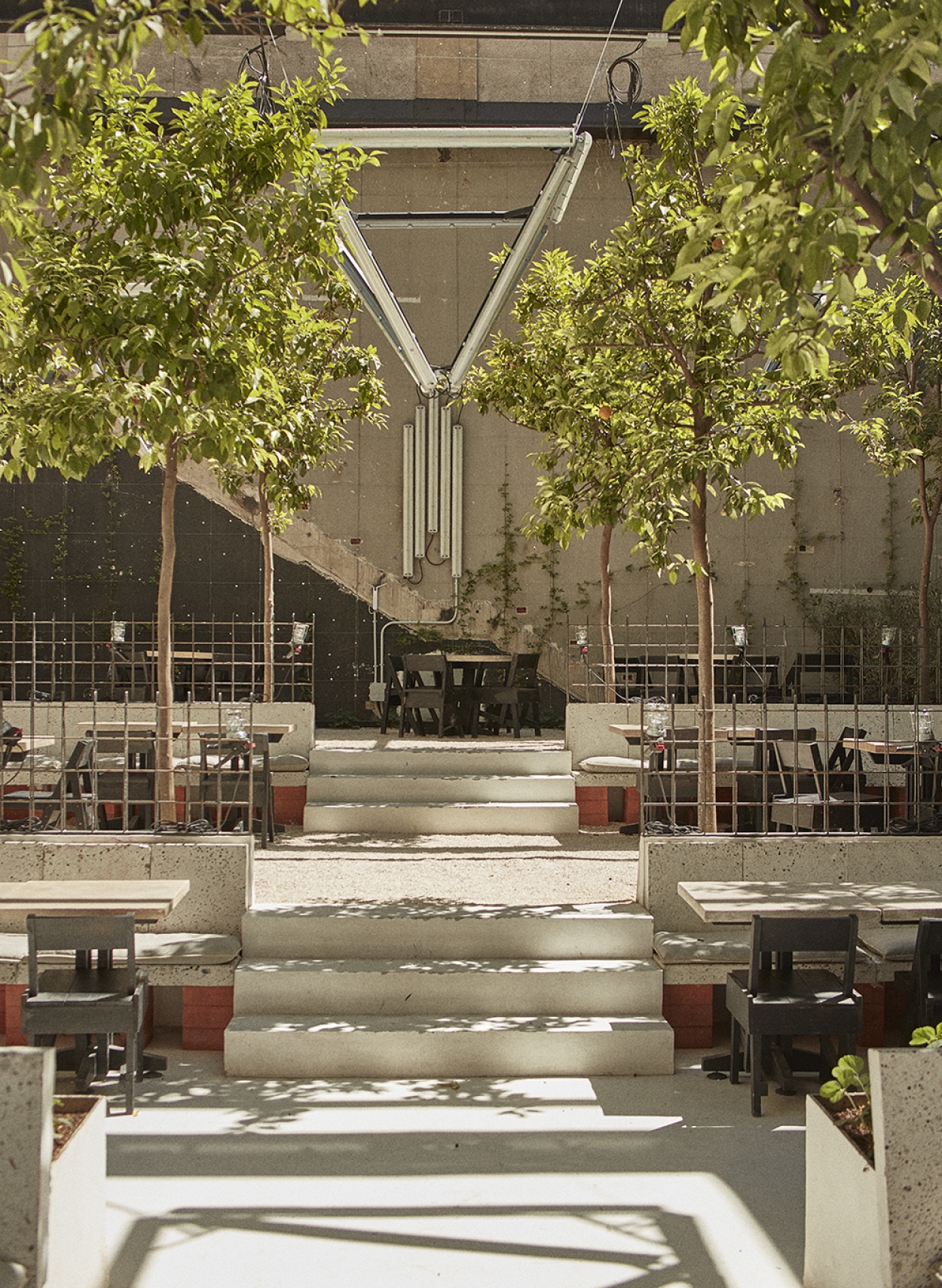Although the internationality of the studios called upon to direct projects at a distance has established itself as a necessary discriminant for ensuring the resonance of an architectural project, “being on-site” has recently been rediscovered as the key value of sustainable design. This is well known by Lucas Muñoz Muñoz, a designer-artist-craftsman who, between Eindhoven and Madrid, has rooted the DNA of his studio in the activity of the construction site. And not only because his work is developed both in the atelier and on the intervention sites. Since 2012, in fact, he has fought to affirm a vision of design based on recovering, enhancing, and remodeling what is already there.
This is to reduce the impact that building has on matter and space. To enhance local craftsmanship. But above all to actively address those issues to which those who shape “the world of things” cannot today fail to respond. Let’s talk once again about consumption, overproduction, pollution, and the related social and cultural implications. Certainly complex themes but essential to face this discipline with the humor, logic, and critical sense that distinguish Lucas Muñoz Muñoz and the ecological metamorphosis of the space on which he intervenes.
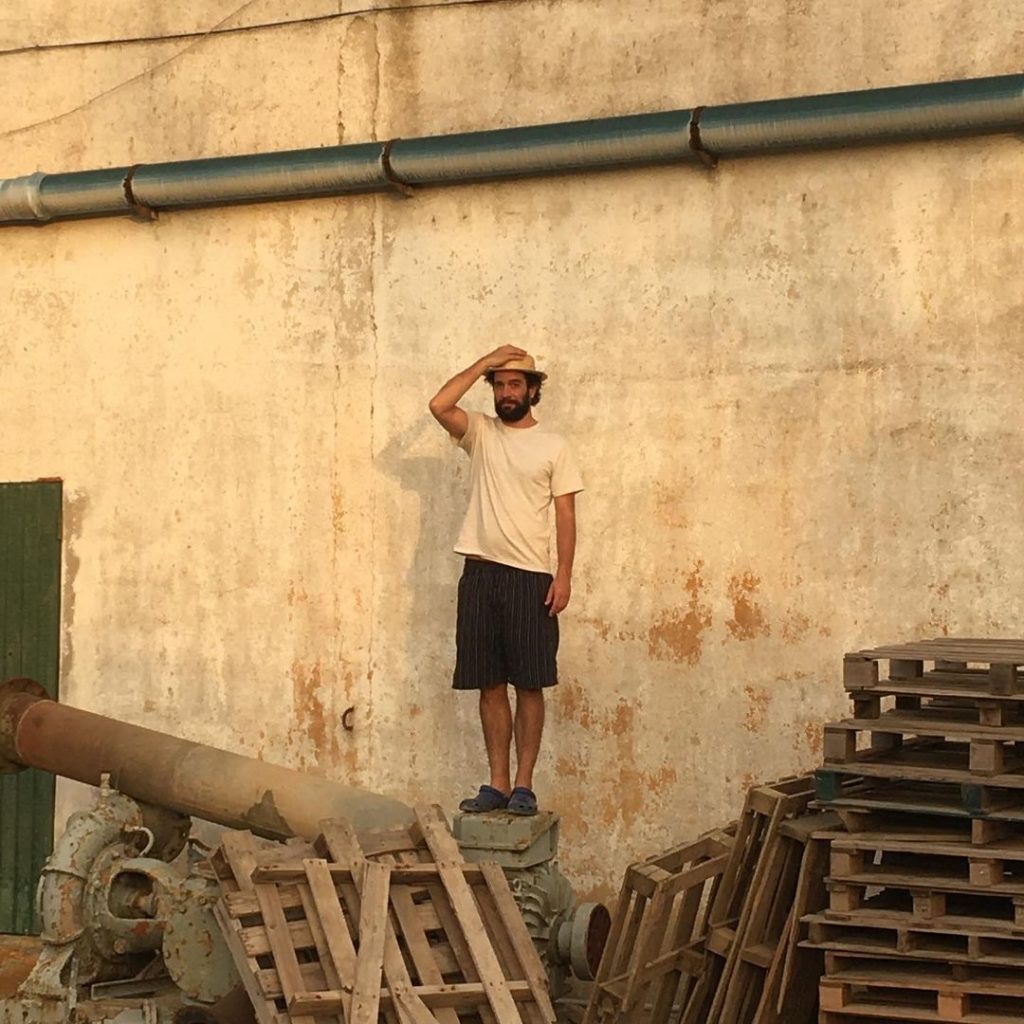
But how did Lucas Muñoz Muñoz establish himself and how does his approach play out?
With an enviable academic background and projects exhibited in museums, galleries, and private collections overseas, Lucas has had the ability to anticipate the openness that design is now manifesting towards other disciplines and areas of knowledge. After graduating in product design from Central Saint Martins in London and studying Exhibition Design and Management at IED Madrid, he also earned a master’s degree in Contextual Design at the Design Academy in Eindhoven. It’s not surprising, in fact, that in the canonical portfolio of renovation and exhibition design works, videos, musical experiments, and ephemeral interventions alternate. They are all exercises in conceptual digression aimed at promoting social and environmental reflections.
Indeed, the role he has carved out for himself in the industry is to redefine the functionality of discarded artifacts. This is how he practices recycling. Emphasizing the ability of ordinary objects to embody and retain deep meanings. Trying to trace the way things are made, their origins, and how they are used. He works with his hands the materials he finds on-site so that they respect the context in which they are set. The value of his projects, in fact, lies in the application of participatory and territorial strategies.
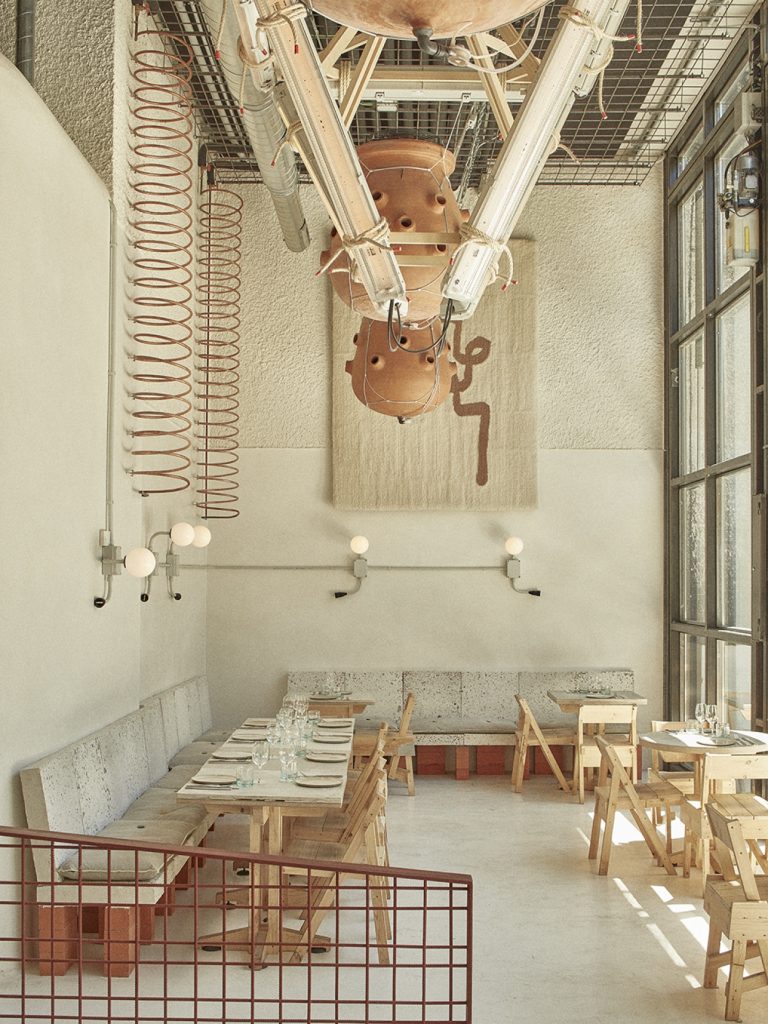
What do these ecological metamorphoses consist of?
An emblematic case to describe the Spanish designer’s approach is the MO de Movimiento project. A former theater on 34 Espronceda Street transformed into a 1,000-square-meter restaurant. During the 16 months of work on-site, Lucas Muñoz Muñoz has transformed the place of intervention into the real laboratory of his team, making improvisation and experimentation the very concept to be translated into the matter. Specifically, he reused all the materials obtained from the demolition work and handcrafted the furniture. From demolition to reconstruction, Muñoz and his followers have constantly evaluated the coherence and validity of the decisions, the quality of the materials recovered, and the effective possibility of reuse. It is, in fact, using a profound environmental awareness that the firm has reduced the ecological footprint of this intervention by 70% over the norm.
So much so that, beyond the reuse of materials derived from the former theater, then re-purposed as a communication and registration agency (EFE), what distinguishes the receptive space in question is the adiabatic cooling system. They made it in the form of terracotta pots lowered from the ceiling. It is in these objects, as poor as they are sculptural, that they have embedded the fans, the misting systems, and the water pumps necessary for natural heat exchange.
But what motivates such an arduous process?
At the origin of the project, there is undoubtedly the will of the designer to redefine the traditions and techniques of architecture; making the true identity of MO de Movimento not only a glossy result but a creative and constructive process with a strong sustainable imprint. Each component of the project derives from creative reasoning in which the planet is one of the decisive stakeholders. The re-cycling, the up-cycling, and, more simply, the correct use of materials for the most appropriate functions have been long analyzed, tested, and certified. A team specialized in sustainability was then responsible for calibrating the choice of materials and decision-making strategies. And this in both ethical and mathematical terms. In this way they have avoided any form of greenwashing, to respect, instead, what the term sustainability really implies.
Thus, demonstrating a deep respect for the life cycle of materials, they have studied each element taking into consideration its use over time, its maintenance, and the hypothetical and avoidable replacement. It is as if, in the intervention, aging and the passage of time were a real resource. Because space is evolving. This is how it allows nature and man who inhabit it to be active players in its completion. Moreover, working closely with Inés Sistiaga and Joan Vellvé Rafecas, Lucas has identified different strategies with which to valorize local suppliers and workers, remainders and second-hand goods, and territorial traditions.
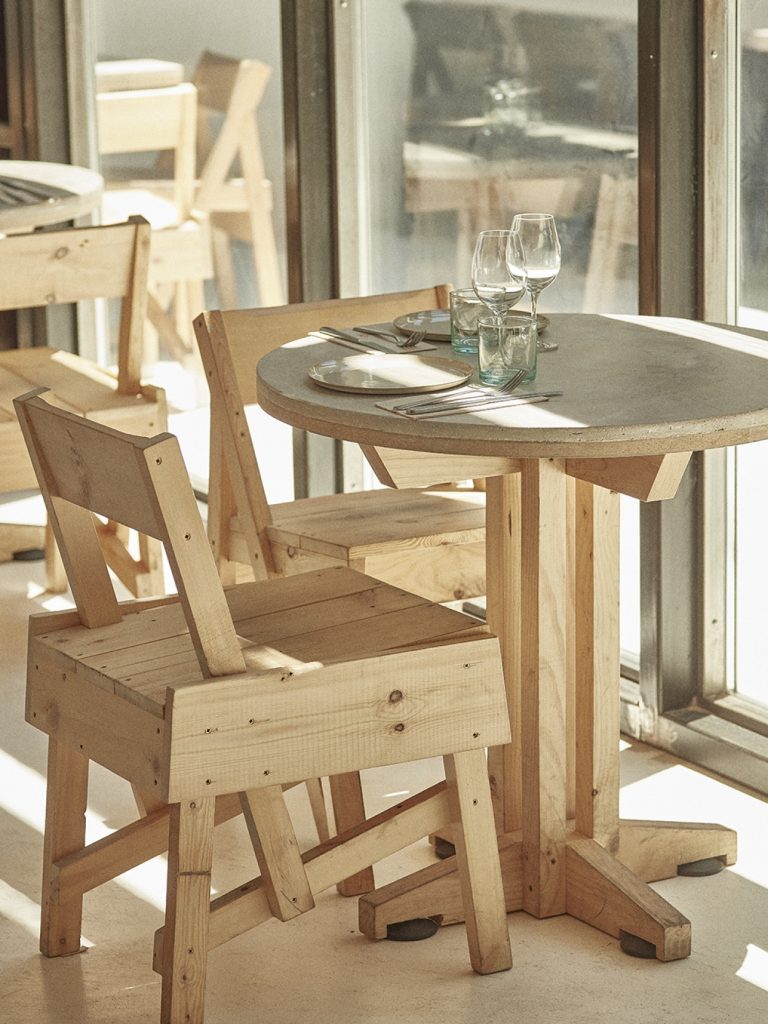
What about the furnishings?
Working parallel with the construction site in an improvised workshop in Madrid, Lucas produced chairs and tables from pine woods salvaged from the construction site. When the former theater was initially converted into a recording studio, in fact, the quarry was raised by building a pinewood floor. It was on this one that Lucas invested time and effort in dismantling it to prototype the restaurant’s furniture.
Tabletops are made of water-resistant MDF. As for the finishes, a water-based enamel coats the indoor furnishings. For the outdoor ones, there is a combination of the same enamel with Indian ink. This is a natural and totally organic repellent. In general, Lucas has avoided all forms of decorative and superfluous embellishment. For example, he preferred to make the ceiling lights by reusing PVC electrical cable boxes. In order to eventually grow climbing plants that will give life and soul to the space, he developed the idea of placing metal nets on the perimeter walls of the patio.
As we can see from what could be a simple renovation work, reusing industrial or waste materials in an innovative way is an established practice for the Spanish designer. The result is a project that reconsiders building as an opportunity to devise sustainable strategies of production, consumption, work, and supply.
Is it therefore possible to adopt such an approach in the home environment?
Clearly yes! All it takes is a little bit of insight and a lot of observation and cataloging skills. With Temporal – Machado Muñoz, Lucas presented a collection of objects taking, as a starting point, the information that the United Nations had just shared regarding consumption in his home country. Referring to the data on kilos of asphalt produced per second; the number of copper pipes consumed on average; and the volume of water used by a Spaniard, he built furniture in which the functions are defined by the volume and quantity of materials used. It is in this way that, like an analyst, he transferred data of social phenomenology into domestic morphology. By decontextualizing the graphs, Lucas has actually materialized the impact of our presence on earth as citizens and especially as consumers.
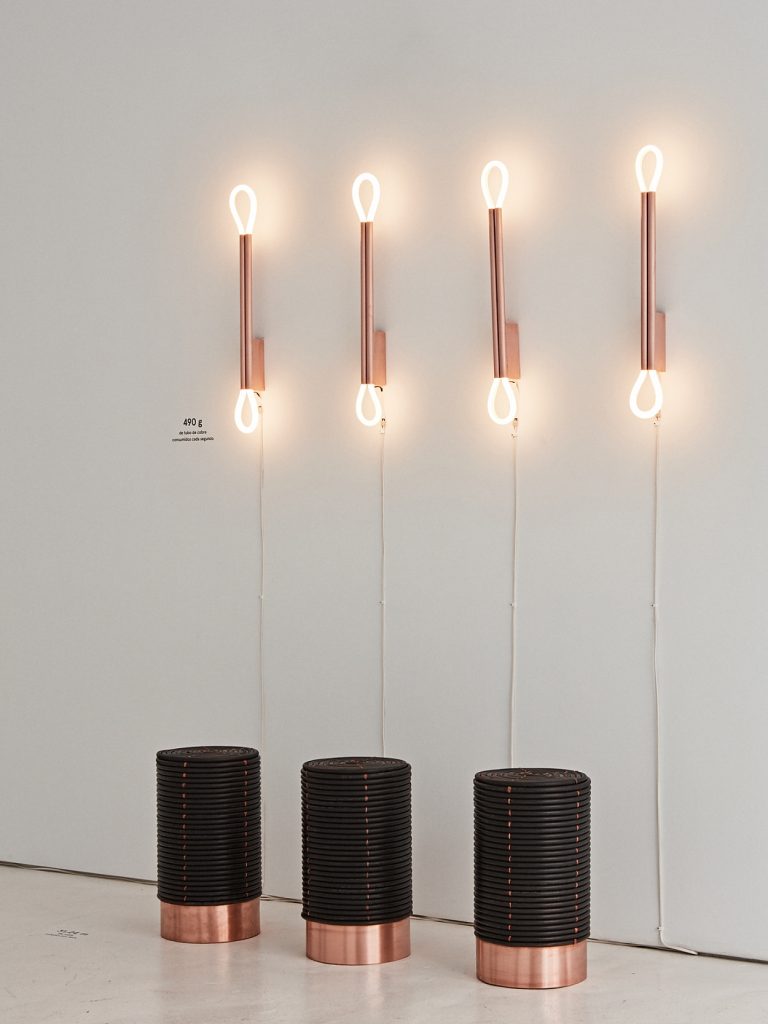
At this point, we can only close with a project that attests to the participatory, inclusive, and, why not, ironic character inherent in so much social and environmental commitment. With Mobiliario Urbano, in fact, Lucas has introduced what he himself calls ‘wild objects’ in areas that lack the urban furniture necessary to generate the active participation of citizenship. These are supplies made from discarded materials that, recovered during an outdoor evening with friends, have been revisited with the simple use of scotch tape, ropes, and polyurethane foam, to make them places of social interaction. What another way to apply the discipline of a conscious creative spirit to the common good!


